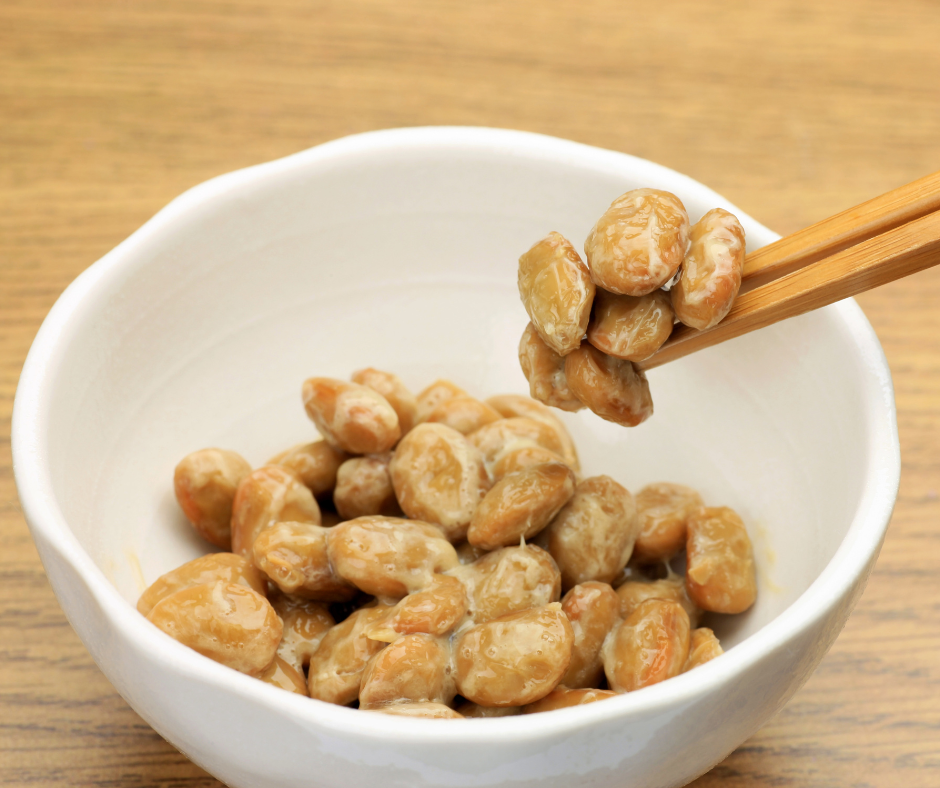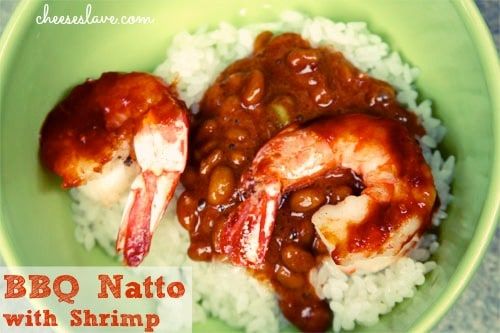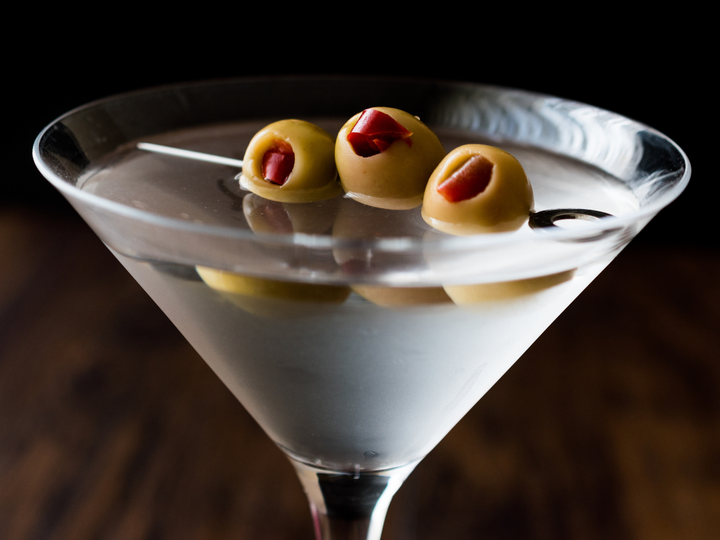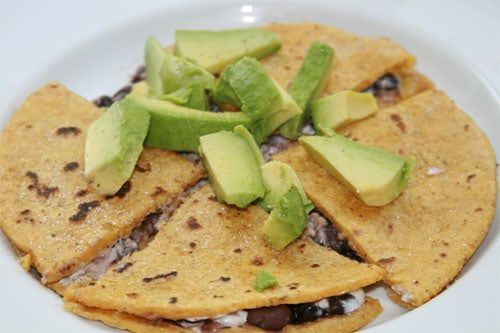BBQ Natto with Shrimp
Japanese food is one of my favorite cuisines. Growing up in Texas, I also cultivated an appreciation for BBQ sauce.

Japanese food is one of my favorite cuisines. Growing up in Texas, I also cultivated an appreciation for BBQ sauce.
Today we’re doing a fusion dish. Call it New American meets Japanese: BBQ Natto with Shrimp.

What The Heck Is Natto, and Why Should We Eat It?
Natto is a traditional food in Japan. It is made from fermented soybeans, which is the only way we should be eating soy (unfermented soy is bad for you). In Japan, natto is usually consumed as a breakfast food, with rice and miso soup.
Natto has more vitamin K2 than any other food. Natto, weighing in at 1103 micrograms of vitamin K2 per 100 grams, has almost 3 times more K2 than the second best source, goose liver pâté (369 micorgrams per 100 grams). The third best source, hard cheese, contains only 76.3 micrograms of vitamin K2 per serving.
Why Do We Need Vitamin K2?
According to Chris Masterjohn, PhD candidate in Nutritional Sciences at the University of Connecticut:
"In 1945, Dr. Weston Price described “a new vitamin-like activator” that played an influential role in the utilization of minerals, protection from tooth decay, growth and development, reproduction, protection against heart disease and the function of the brain. Dr. Price died before research by Russian scientists became known in the West. These scientists used the same chemical test to measure a compound similar to vitamin K.
A growing body of published research confirms Dr. Price’s discoveries, namely that vitamin K2 is important for the utilization of minerals, protects against tooth decay, supports growth and development, is involved in normal reproduction, protects against calcification of the arteries leading to heart disease, and is a major component of the brain.
Vitamin K2 works synergistically with the two other “fat-soluble activators” that Price studied, vitamins A and D. Vitamins A and D signal to the cells to produce certain proteins and vitamin K then activates these proteins.
Vitamin K2 plays a crucial role in the development of the facial bones, and its presence in the diets of nonindustrialized peoples explains the wide facial structure and freedom from dental deformities that Weston Price observed. Source
In other words, if you can get your kids to eat this, and if you can eat it when pregnant/nursing, you may be able to spare them from having to wear braces. But it’s not just about saving money on the orthodontist. With naturally straight teeth, a wide palate and properly developed bones come many other gifts: freedom from snoring, wide hips for easy childbirth, and the list goes on.
To read more about the overall health benefits of proper bone formation, read this fascinating article by my dentist, Dr. Raymond Silkman: Is it Mental or is it Dental? Cranial & Dental Impacts on Total Health.
Vitamin K2 is not just for kids. It is also really important for older adults to prevent osteoporosis. A recent study published by the European Prospective Investigation into Cancer and Nutrition (EPIC) has shows that increased intake of vitamin K2 may reduce the risk of prostate cancer by 35 percent. Read more about that study and other benefits of vitamin K2 here."
But How Does It Taste?
Many Americans don’t like natto. They say it smells like stinky cheese, and has a weird gooey, stringy consistency. I was pleasantly surprised when I tried it. There was no stinky smell (and, being a lover of stinky cheese, I know stink) and the texture, while a little different, was not offensive.
But even if you do find the natto to be a little stinky, the BBQ sauce will effectively disguise that. The texture is what it is — I can’t help you with that. You’ll have to work to expand your palate and broaden your horizons a bit.
My toddler loved this dish. She devoured the whole thing — ate every last bite. I actually added the shrimp to the dish in case she didn’t like the natto, but guess what? She ate the shrimp last!
She enjoyed using her pincer grasp to pick up the beans and seemed to have fun with the stringiness. I loved it, too, and so did my husband. This is a man who will not eat most liver or organ meats, nor will he eat stinky cheese (says it “smells like feet”), so I was thrilled that he loved the natto. I’m so inspired by natto that I want to write a whole cookbook full of natto recipes.
Where To Buy Natto
You can find natto in most Japanese grocery stores.
You have to be very careful though because most of the natto they sell contains MSG. Read the ingredients, and be sure to buy one without “seasoning sauce”. I found two brands of natto that don’t have MSG added: Shirakiku and Miyako.
After I bought my natto, I read (in the comments of the article sourced above) that Japan is now buying our crappy American GMO soybeans and using them to make natto. Sigh…
However, you can find organic non-GMO natto. Ask for help at your Japanese market, since the packages will not necessarily say organic. I read online that if it’s organic, it will have the JAS OMIC seal on the package. (I looked at my packages and unfortunately the do not have the seal.)
If you can’t find natto at a local store, you can also ferment your own. Just buy organic soybeans and the natto culture (available online). Natto also freezes well, so if you find a source to buy organic natto, you can buy a bunch and freeze it.
One other thing (this may aid you in getting over any issues you may have with unfamiliar, gooey, stringy, potentially stinky foods): natto is very economical. You’d have to eat three times as much goose liver to get the same benefits.
The 7 ounce package of natto I bought was only $2.00 — or about .50 per serving. Compare that to foie gras — to get the same amount of vitamin K2, you’d have to spend over $15 per serving.
This is not to denigrate foie gras. It’s one of my very favorite foods. I will be posting a recipe for seared foie gras sometime in the near future.
And a final note: I don’t recommend eating natto frequently. Yes, it’s economical and the very best source of vitamin K2, however, it is still a soy product, albeit a fermented one.
Nonetheless, soy should not be eaten in large amounts even if it is fermented. The fermentation breaks down the phytic acid and helps make the soybeans more digestible, but it does nothing for the large quantity of isoflavones in soy, which really messes with your hormones. For this reason, it’s best to eat natto sparingly — not every day.
BBQ Natto with Shrimp
Makes 2 servings
Ingredients:
Rice (1 cup) — I used sushi rice but you can use brown rice
Homemade barbecue sauce or you can use storebought BBQ sauce ( 1/4 cup)
Natto – look for organic (2 containers)
Green onions (2)
Raw egg yolks (2) — use eggs from pastured chickens
Butter, lard, or refined coconut oil (1 TBS) — where to buy butter
Fresh or frozen shrimp (6)
Equipment:
Rice Cooker — make sure you get one without a Teflon bowl; I use the VitaClay Rice Cooker
Directions:
1. Cook the rice in a rice cooker or on the stove.
2. Prepare the barbecue sauce using my recipe: Homemade barbecue sauce. If using storebought, warm up in a pan.
3. Peel and devein the shrimp. Dip the shrimp in BBQ sauce and set on a plate.
4. Add minced green onion and raw egg yolks to remaining BBQ sauce and stir to incorporate. Set aside.
5. Heat butter or lard on medium heat in a cast iron or stainless steel skillet.
6. Add the shrimp to the pan and cook a few minutes on each side — until pink and cooked through.
7. Remove from heat and set aside.
8. When the rice is ready, stir the natto with a fork or chopsticks for 30 seconds or so, until it is stringy and foamy. Stir in the barbecue sauce/green onion/egg yolk mixture.
9. Serve the rice in bowls, topped with the natto.
10. Arrange the shrimp on top of the natto.



Comments ()